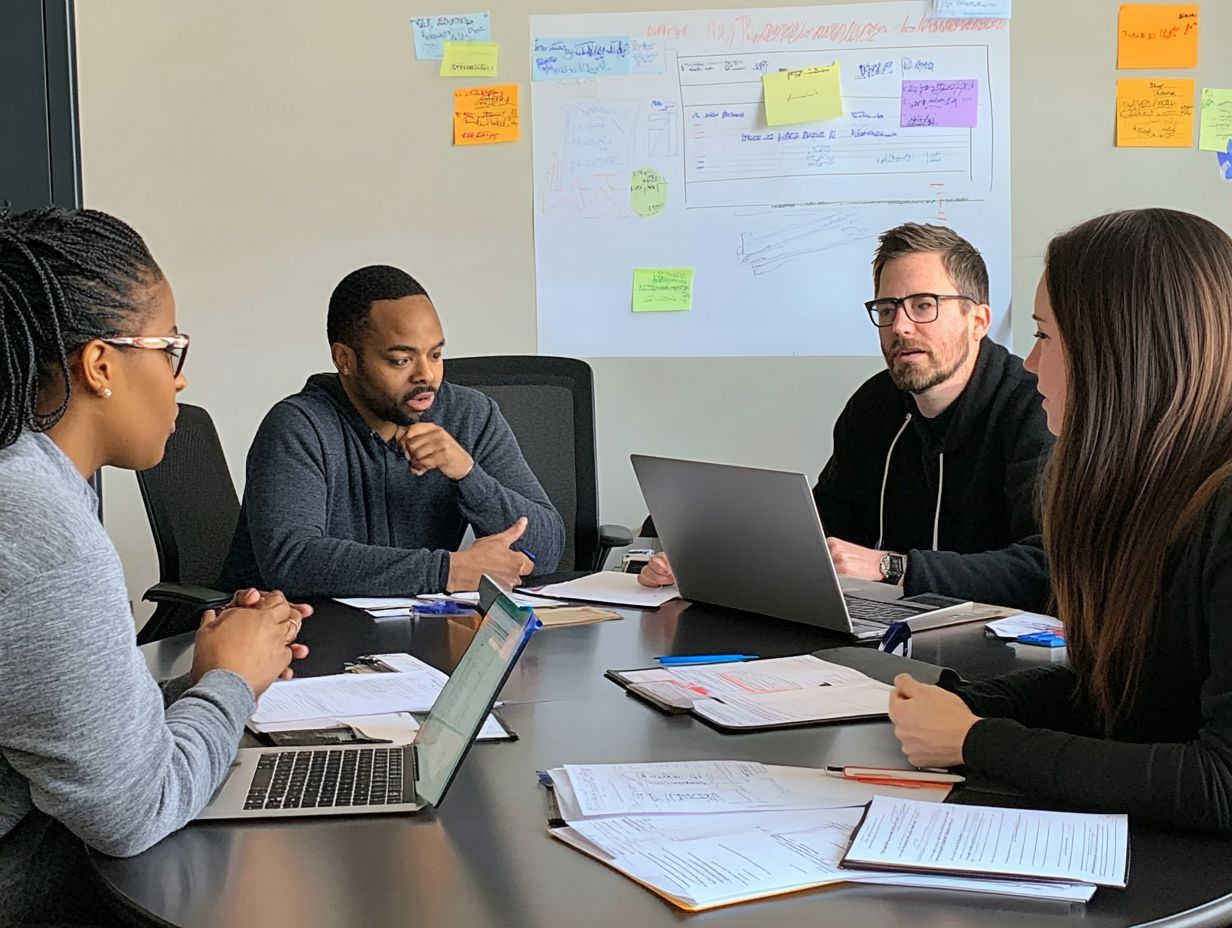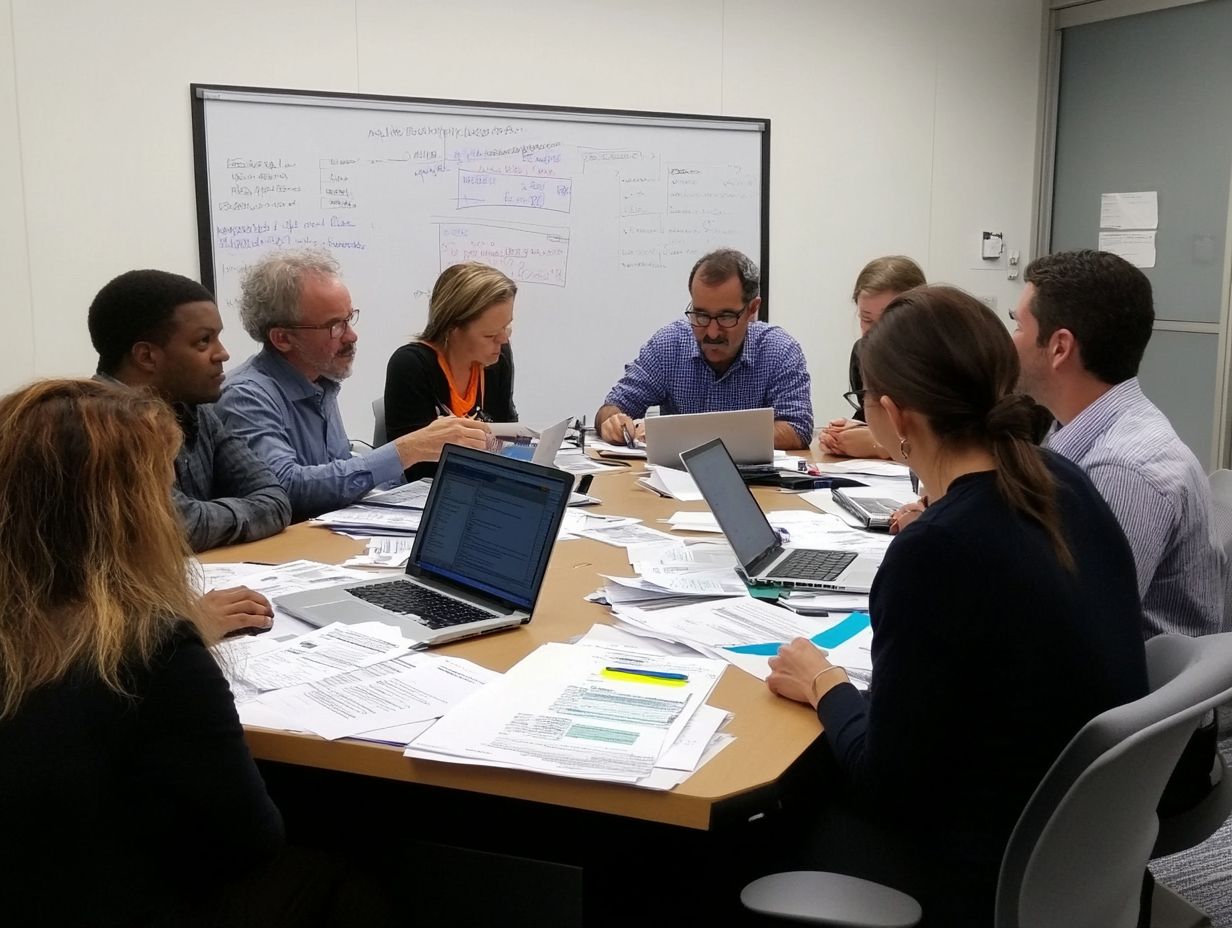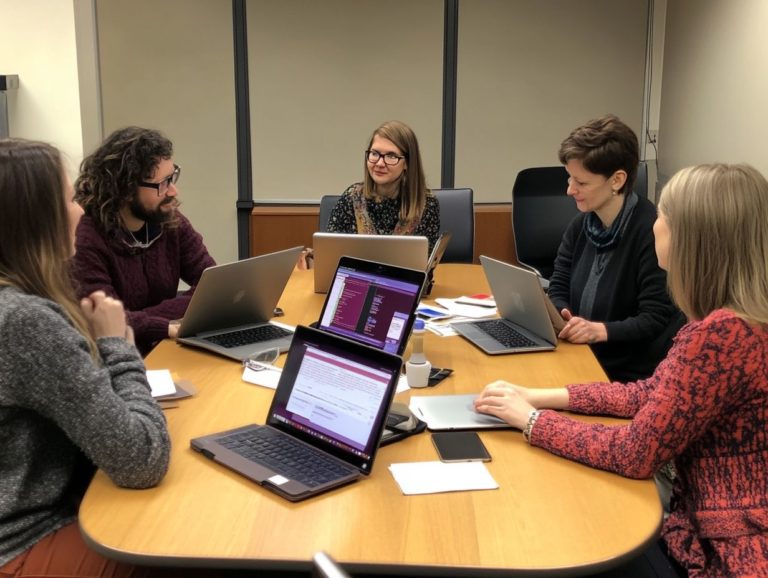the role of human expertise in vulnerability assessments
In our interconnected world, conducting vulnerability assessments is vital for identifying risks and protecting valuable assets.
Technology is important in vulnerability assessments. However, human expertise is key to understanding these vulnerabilities.
This article explores how human insight and technology work together. We will look at methods like interviews and expert panels.
Discover how combining human knowledge with advanced technology can enhance the accuracy and efficiency of vulnerability assessments.
Contents
- Key Takeaways:
- The Importance of Vulnerability Assessments
- The Role of Human Expertise in Assessments
- Methods for Incorporating Human Expertise
- Benefits of Combining Human Expertise with Technology
- Frequently Asked Questions
- What is the role of human expertise in risk evaluations?
- How does human expertise contribute to the accuracy of risk evaluations?
- What are the benefits of utilizing human expertise in risk evaluations?
- Can risk evaluations solely rely on human expertise?
- How can organizations ensure the effectiveness of human expertise in risk evaluations?
- What challenges may arise when relying on human expertise in risk evaluations?
Key Takeaways:

Human expertise is crucial in vulnerability assessments. It provides a deeper understanding of risks, leading to more accurate results.
Methods like interviews and surveys effectively incorporate human expertise into these assessments.
Combining human skills with technology, such as AI, can greatly enhance accuracy and efficiency.
The Importance of Vulnerability Assessments
Vulnerability assessments are essential in online security. They help identify and reduce potential cyber threats that could lead to financial losses or data breaches.
When you conduct regular assessments, you boost your security, protect sensitive data, and comply with regulations like GDPR and HIPAA.
This proactive approach safeguards your assets and encourages continuous improvement among security professionals.
Understanding Vulnerability and Risk
Understanding vulnerability and risk is crucial if you want to protect your digital assets against ever-evolving cyber threats while ensuring compliance with regulations.
Vulnerabilities are like chinks in your armor weaknesses in your system that malicious actors can exploit. These weaknesses can lead to breaches and the loss of sensitive information.
Vulnerabilities can manifest in various forms, from outdated software to misconfigured networks, each contributing to your organization s overall cyber risk profile.
By identifying and categorizing these risks, you can prioritize which threats to tackle first. Effective risk assessments help you spot vulnerabilities and guide the creation of robust security policies and tailored incident response strategies.
This proactive approach enables you to mitigate potential damages and significantly enhance your overall cybersecurity posture.
The Role of Human Expertise in Assessments
In cybersecurity, your expertise is essential for conducting comprehensive vulnerability assessments.
By complementing automated tools with your creative thinking and contextual understanding, you enhance the ability to uncover insider threats and vulnerabilities that technology alone might miss.
Your insights are what truly elevate the security landscape, ensuring a more robust defense against potential risks.
Why Human Expertise is Essential

The human element is essential in vulnerability assessments because it provides a profound understanding of the cybersecurity culture within your organization.
It’s common for organizations to underestimate how individual actions whether deliberate or accidental can create significant security risks.
Effective cybersecurity transcends mere technological solutions; it demands a commitment to cultivating a culture of awareness and accountability.
Employees often stumble into familiar traps, like weak password practices or neglecting software updates, which can leave systems vulnerable to attacks.
By addressing these behaviors through structured security awareness training, you not only equip your team with vital knowledge, but also encourage a proactive mindset toward identifying and mitigating threats.
Fostering this kind of culture ensures that cybersecurity becomes everyone’s responsibility, ultimately fortifying your organization s defenses.
Challenges and Limitations
Despite the considerable advantages of integrating human expertise into vulnerability assessments, your organization may encounter several challenges that can hinder its security efforts.
These obstacles include constrained budgets that limit access to the latest tools, technology gaps that impede effective monitoring, and an over-reliance on automated software that might miss subtle insider threats threats from employees within your organization.
Without a balanced approach that combines human insight with advanced technology, your organization might be at risk! This reality underscores the necessity for a multifaceted strategy.
Methods for Incorporating Human Expertise
Incorporating human expertise into vulnerability assessments can be achieved through a range of methods. Consider using interviews, surveys, expert panels, and a feedback technique where experts provide input in rounds to reach a consensus.
Each of these approaches provides unique insights that enrich the assessment process, ensuring a comprehensive understanding of potential vulnerabilities.
Interviews and Surveys
Conducting interviews and surveys is a powerful strategy for gathering qualitative and quantitative data. This allows you to understand your cybersecurity culture and identify potential threats from within your team.
By crafting both open-ended and close-ended questions, you can gain valuable insights into employee perceptions, their knowledge of security protocols, and their data-handling behaviors. This approach reveals not only current vulnerabilities but also highlights areas where your team needs training and awareness.
The information collected will serve as a vital foundation for evaluating your existing security policies. It enables you to tailor vulnerability assessments to tackle the specific challenges your organization faces.
Ultimately, the data gathered will help foster a proactive security environment, equipping you and your decision-makers with the insights needed to enhance organizational resilience.
Expert Panels and Feedback Techniques

Expert panels and feedback techniques harness the power of collective human expertise. They enable you to make informed decisions in vulnerability assessments and strengthen your overall cybersecurity strategies.
By bringing together a diverse group of cybersecurity professionals, these methodologies create a rich tapestry of insights that address complex threats. Each participant contributes unique experiences and specialized knowledge, facilitating a thorough exploration of potential vulnerabilities.
This collaborative approach sparks innovation in crafting security frameworks and instills confidence in the strategies you adopt. It sets the stage for more resilient systems in the face of evolving cyber risks.
Benefits of Combining Human Expertise with Technology
By merging human expertise with advanced technologies like AI and machine learning, you unlock significant advantages in conducting vulnerability assessments.
This powerful combination leads to more effective security measures and greatly enhances your accuracy in pinpointing cyber threats.
Utilizing AI and Machine Learning
Utilizing AI and machine learning in cybersecurity can significantly elevate your vulnerability assessments, enabling you to proactively identify risks and streamline your evaluations through automation.
These cutting-edge technologies sift through vast amounts of data, detecting anomalies that might signal potential threats before they escalate into breaches. In risk management, AI algorithms prioritize vulnerabilities based on their potential impact, guiding you on where to allocate your resources for maximum effect.
Machine learning models continuously adapt, learning from past incidents to refine your incident response strategies. By automating data analysis, these technologies enable your team to respond swiftly to emerging threats, minimizing damage in an increasingly complex cyber landscape.
Take action now! By combining human expertise and advanced technology, you can significantly enhance your organization s cybersecurity posture.
Improving Accuracy and Efficiency
Improving the accuracy and efficiency of your risk evaluations is essential. By combining automated penetration testing with human expertise, you create a comprehensive approach to identifying and addressing cybersecurity risks.
This combination streamlines your assessment process and provides a deeper understanding of potential weaknesses within your system. Leveraging automated tools allows you to swiftly scan for known vulnerabilities and uncover patterns that might signal insider threats.
This efficiency lets your cybersecurity professionals focus on complex tasks that require critical thinking and creativity. Ultimately, this enhances your organization’s overall security posture.
With continuous monitoring of vulnerabilities, you can act now to shrink the attack window for potential attackers.
Frequently Asked Questions

What is the role of human expertise in risk evaluations?
Human expertise is crucial in risk evaluations as it involves using knowledge, experience, and skills to identify and evaluate potential risks and vulnerabilities.
How does human expertise contribute to the accuracy of risk evaluations?
Human expertise allows for a deeper understanding of the systems and processes being assessed, making it easier to identify and evaluate potential vulnerabilities accurately.
What are the benefits of utilizing human expertise in risk evaluations?
Using human expertise can lead to more comprehensive and reliable results, providing unique insights and perspectives that automated tools may miss.
Can risk evaluations solely rely on human expertise?
No, risk evaluations should combine human expertise and automated tools. While human insight is valuable, automated tools can cover a wider scope and identify potential vulnerabilities that may be overlooked.
How can organizations ensure the effectiveness of human expertise in risk evaluations?
Organizations should invest in training and developing cybersecurity professionals to keep their expertise up-to-date with the latest threats and vulnerabilities. Regular reviews and updates of processes and procedures can also enhance the effectiveness of human expertise.
What challenges may arise when relying on human expertise in risk evaluations?
Challenges may include human error, bias, and resource limitations. It is important for organizations to have a thorough and standardized approach to risk evaluations to mitigate these challenges.
Contact us today to improve your cybersecurity strategy!






